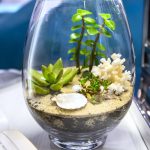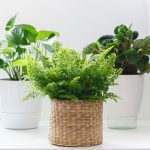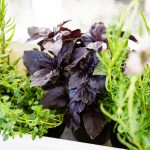Due to its unique appearance, variegated ivy is popular as a decorative indoor plant. It is perfect for hanging pots or for traditional pots and can be trained to grow in various ways. It is a durable plant that can live in many conditions, but its care can be difficult if you are intent on maintaining the unique leaf color. This plant is great for beginners who would like a challenge or intermediate indoor gardeners.
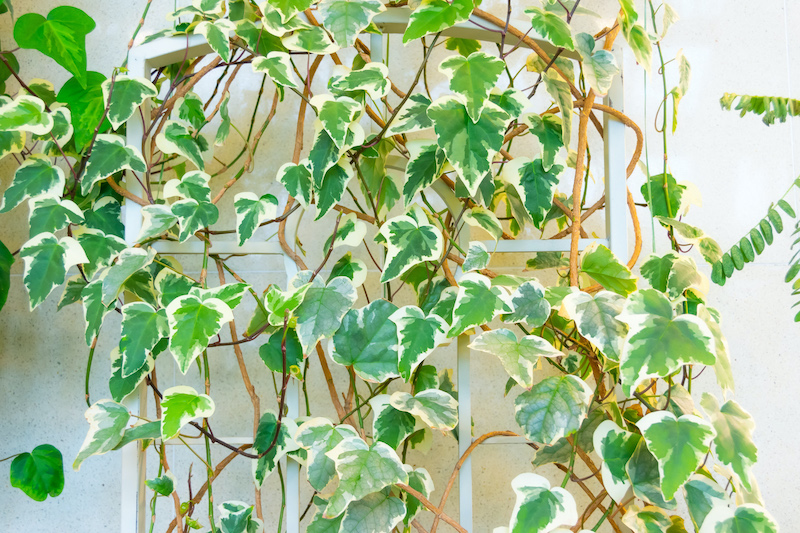
Variegated ivy, a type of Hedera ivy, can be grown in a hanging basket or trained to grow up a vertical surface like a decorative lattice. It is a vining plant with leaves that branch out from the main vine. This plant is a unique form of ivy with an attractive variety of colors in each leaf. The primary color leaf colors are green blended with either white or yellow/gold. However, only proper variegated ivy care will result in mixed color leaves. If it does not receive the correct amount of sunlight, it can revert to standard green leaves like other ivy plants.
Variegated ivy can be trimmed to maintain the desired shape and size. Because it is a vining plant, it can spread out quite far if left untrimmed in the proper growing conditions. The leaf shape can vary based on the variety. Variegated English ivy tends to have more curly leaves while Persian ivy has more heart-shaped or star-shaped leaves. In either case, variegated ivy has a distinct two-toned color pattern that gives it a unique look.
Overall, variegated ivy care is pretty easy and our tips for taking care of indoor plants will be helpful. Once you find the best spot in the house for the plant, it requires minimal effort to keep it alive. However, finding the best spot with the correct lighting can be a bit challenging.
Care Guide For Variegated Ivy
Light
In order to maintain its notable color pattern, variegated ivy requires indirect or filtered sunlight. The variegated color pattern happens because the leaves have less chlorophyll than most other forms of ivy. Due to the lack of chlorophyll, the leaves do not do well in direct sunlight. If the leaves get direct sunlight, they can start to turn brown and die.
This plant is found naturally in areas with dense foliage that filters sunlight before the light reaches the leaves. If they don’t get enough sunlight, they can start to turn a standard shade of green like most other ivies. It tends to grow especially well when placed near a sunny window that has a curtain.
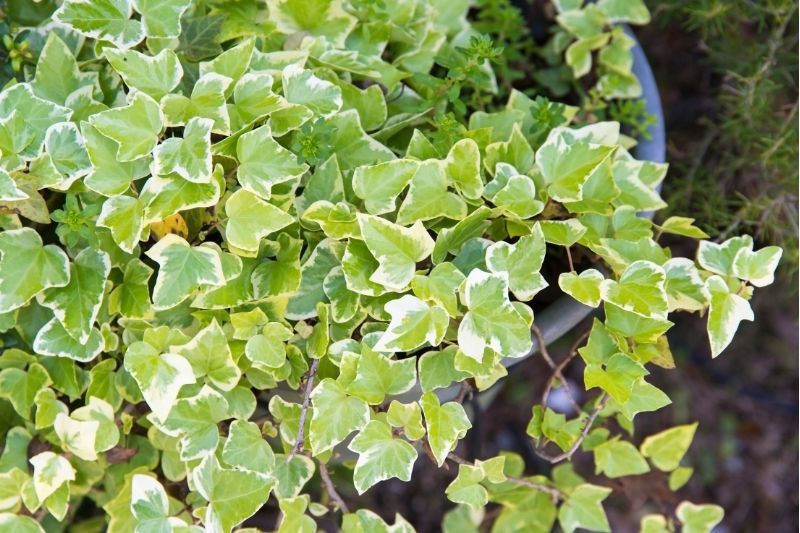
Water
Variegated ivy requires well-draining soil and a pot with drainage holes that allows water to filter through it. The soil should be moist but not overly wet. If the soil becomes water-logged, the roots can start to rot. Over-watering is a common reason that any Hedera ivy does not survive as a houseplant. If your plant is starting to look unhealthy, you may need to change the watering schedule. A soil moisture meter can be very helpful to monitor the soil moisture content to help with watering.
To maintain the correct soil moisture, water the plant once every 5-7 days. Test the top few inches of the soil with your finger. If the soil is still wet, give it a little more time before watering. If the soil is dry, it’s time to water the plant. Gently pour water into the base of the plant until water starts to run out of the bottom of the pot. This ensures that the soil is completely watered and that you will not get too much water on the leaves.
Temperature and Humidity
Variegated ivy grows well in temperatures between 50℉ and 70℉. However, it can survive in temperatures that are a little warmer or colder. This plant does especially well in a somewhat humid environment, but it can survive in drier conditions as well. If your house is in a particularly low-humidity area, you may need to spray the leaves with a mist of water to help maintain the proper moisture.
Fertilizer
Proper variegated ivy care requires fertilizing the plant infrequently. Typically, you can fertilize it with a diluted water-based fertilizer once per month. Depending on the growing conditions, you may only need to fertilize it once per year. If it is fertilized too often, the fertilizer can build up in the soil and kill the plant. If you notice that the plant stops growing in summer or winter, stop fertilizing it for the duration of the season.
Pruning
Hedera ivy plants can be pruned to keep them at the desired size.
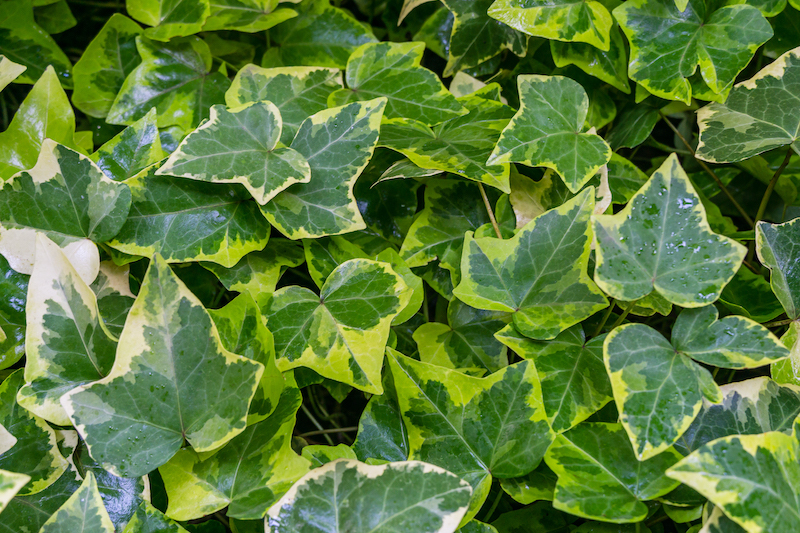
Variegated Ivy Planting Guide
Soil
For the best variegated ivy care, ensure that the plant is grown in well-draining soil. The plant will not survive well if it is grown in waterlogged soil.
Propagating
You may want to grow more ivy so that you can use it for decorations at a party, or you may just want to give it away to friends. Either way, propagating variegated ivy is very easy once you get started. Using a clean pair of shears, cut a piece of ivy approximately 4-feet long. Then you can trim the vine into a few smaller pieces. For each smaller piece, leave approximately 1-inch of stem at the bottom and make sure that it has at least two leaves.
Then, plant the small vines into a small container filled with a well-draining potting mix or sand. Place the small container into a plastic bag and water the plants. The plastic bag will help retain moisture while the vines are taking root. Water the new plants every 5-7 days to keep them moist. Within 6-8 weeks, the new plants will start to take root and you can transfer them to a new pot.
Problems
The most common reason that variegated ivy does not survive when grown indoors is improper sunlight. If the plant receives direct sunlight, the leaves can burn and start to die. Ensure that the plant receives plenty of indirect or filtered sunlight.
Over-watering can also kill this type of ivy. Be sure to let the soil dry out between waterings.
Interesting Hedera Ivy Facts
Variegated English ivy is considered to be an invasive species in some states. Before purchasing this particular variety, double-check that you do not live in one of those states.
Do’s & Dont’s

Do’s
-
- Place it in indirect, filtered sunlight
- Water it when the soil gets dry
- Fertilize it when it’s growing
Dont’s
-
- Place it in direct sunlight
- Over-water it
- Over-fertilize it
Summary
Variegated ivy is easy to grow as an indoor plant. It can be a fun challenge to maintain the proper lighting so that the leaves maintain their unique color patterns. This is a great plant to add to an ongoing ivy collection or just to spruce up a room. If you make sure that it gets plenty of indirect, filtered light and that it is watered appropriately, it can thrive for years.


